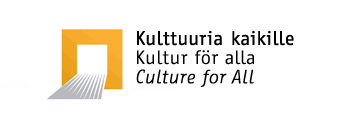Accessibility of the built environment
Does the built environment cater for the needs of a wide range of audiences and staff?
How smooth is it to move around the premises, both indoors and outdoors?
Accessibility is a prerequisite for people to be able to enter, move around and operate in a smooth and safe way. Accessible routes extend uninterrupted everywhere, both in public and staff areas.
Accessible parking spaces, level walkways and lifts large enough to accommodate people with assistive devices are provided. The lowered service points also offer seated access. Signposting is clear and lighting is good. Good acoustics and induction loops create a good listening environment. Accessible and gender-neutral toilets are available.
Objects such as artworks, as well as texts and screens, are positioned so that they can be viewed from different heights. Wheelchair users and other assistive devices can choose from accessible seating in different parts of the auditorium or venue. Seating is available in all public areas, including, for example, the exhibition halls.
Small changes that have a big impact
- Consider needs and implementation together with users.
- Make small improvements without delay: remove thresholds, add seating, handrails and ramps, lower coat racks.
- Offer to lend assistive devices such as rollators, wheelchairs and strollers.
- Portable induction loops are reasonably priced. The loop makes it easier to communicate by transmitting speech through a microphone directly to a hearing aid, for example at a service point.
Major modifications
- Include necessary improvements in long-term plans: more lifts, automatic doors, ramps.
- Involve accessibility experts such as architects from disability organisations and other professionals.
- Alterations can also be made to historic buildings.
When a building is not accessible
- Set the goal of renovating the building accessible: plan, budget and schedule the renovation.
- In the case of rented premises, require the building owner to carry out the renovation or find yourself accessible premises.
- Commit to making the premises accessible and, during the transition period, organise at least some activities in accessible premises. Always locate key activities in accessible spaces.
- Include information on barriers as well as on accessibility.
- Provide accessible experiences and information about spaces that are not accessible, such as pictures, objects, sound samples.
- Take into account in any admission charges if not all the facilities are accessible.
